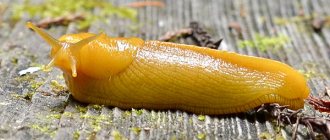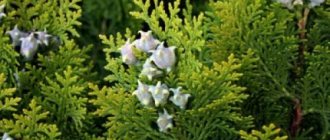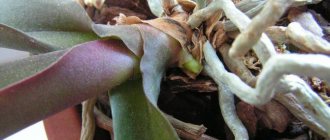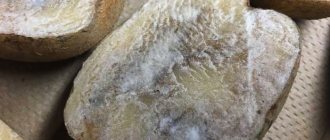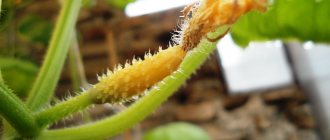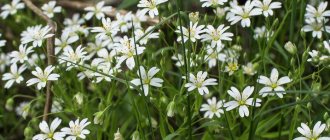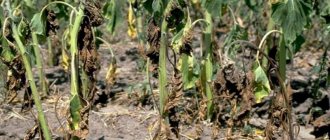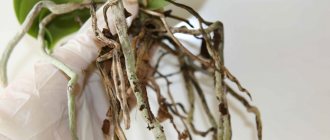The orchid is perhaps one of the most common and favorite houseplants of many gardeners. The period of orchid flowering causes special delight among housewives. Despite the fact that the orchid is considered a tropical plant, the fruits of the flower are also grown in Southeast Asian countries. Most people consider the orchid to be a very capricious flower, associating this with the presence of numerous difficulties in care.
One of the difficulties in caring for an orchid is associated with the appearance of midges in the soil or on the leaves of the plant. The problem is very common, so in this article we will try to find out the reasons for the appearance of midges, share tips on how to get rid of them, and also talk about effective preventive measures to avoid the appearance of insects in the plant in the future.
Prevention
To avoid new infections of the soil cover by various pests and maintain the health of the entire plant, you should monitor the condition of the plant.
It is necessary to carry out preventive actions: Standing near the plants with a solution of Itoverm or Actellik. It is extremely important to keep the inside and outside clean, so it is necessary to wash the substrate and wipe the leaves to prevent the bugs from finding a favorable place to live. The place where the orchid stands must always be kept clean, then the plant will never be infected with podura or other insects that are harmful to home flowers.
If you become the happy owner of an orchid, do not forget that your new family member may also get sick, which will negatively affect both the other inhabitants and you, because you will not get the same amount of aesthetics that you were hoping for if your flower is exposed to pests, therefore, be attentive and caring so that the color of your plant pleases you for as long as possible.
We recommend that you look at our other materials on what to do and how to get rid of orchid pests such as mealybugs, scale insects, mites, including spider mites.
Pests: description and appearance
Midges are a type of insect that lives on flowering plants, including orchids, and leads to their gradual death.
Moreover, these are not only small flying flies, but also larvae, which are distinguished by a high level of resistance to processing agents and an equally high ability to reproduce.
How to recognize attackers? These insects can have two types of color: white and black. The main distinguishing features of pests are:
- oblong body;
- striped body color;
- presence of two wings.
Typically, midges do not reach more than five millimeters in length.
Types of pests
Before asking yourself how to get rid of midges in orchids, you need to know exactly what insects are infested among the plants. They not only look, live and eat differently, they cause different harm, so you will also have to fight inventively.
Sciarides
Sciarides (fungus gnats, flower midges) fly over the plant without hiding. These are small black insects, not exceeding 5 mm in length, they choose moist soil containing peat or moss for breeding, and often come home along with nutritious soil for flowers. They are completely harmless to flowers, but sciarid larvae - white worms up to 7 mm long, damage roots and cause wounds that not only weaken the plant, but become centers of rotting or fungal diseases. You should try to get rid of them at the first detection.
Whiteflies
If the orchids are infested with small white midges, which fly out every time they touch the leaves or soil, then measures must be taken immediately - tiny butterflies with white wings can cause enormous harm to the plant. They settle on the leaves themselves, preferring flowers with thin leaves, and leave offspring under pieces of bark or on the surface of the leaves. Adults and larvae eat plant sap, so with their appearance, the leaves gradually turn yellow, curl, wither and fall off. If you do not start fighting immediately, you may lose the entire flower.
Thrips
The fact that these pests have appeared on orchids is evidenced by the increasing number of tiny dark spots and the finest silvery coating on the leaves. It is better to immediately isolate the affected plant to protect others from thrips - tiny black creatures whose body length does not exceed 2.5 mm. They try not to catch the eye of humans, hiding among the ground, flying out only at night.
As soon as they start, the plant begins to wither, because thrips lay their eggs in the tissue of the leaves, all their offspring eat the plants together, which is why all its parts suffer. Very small larvae are almost impossible to notice with the naked eye, and in order to see adult parasites, gardeners often sit near the orchid at night, waiting for pests with a flashlight.
Fruit midges
If there are fruit flies on the orchid, which are also called fruit flies, then this indicates excessive watering. These insects do not harm flowers; they can appear if you fertilize the flowers with tea leaves, if the moss begins to decompose, if the substrate does not dry out between waterings. Drosophila always appear where vegetables or fruits begin to rot, where plant debris is lying around uncontrollably; by putting things in order with the storage of fruits, we immediately get rid of them.
Description of pests
First of all, it must be said that there are several types of midges that can appear on orchids. In order to fight a pest, you need to understand what kind of insect you will have to deal with.
Sciarides
These small insects have a body size of no more than 4 mm. Can be black or dark gray. They are also called fungus gnats. They have small transparent wings, so they really look like mosquitoes.
Infection of a flower is quite easy to detect, since a whole flock of small midges will fly over it. A favorable habitat for them is cold and damp, so infection often occurs in autumn and spring.
Adults do not cause any harm to the plant, unlike the larvae, which infect the roots of flowers. Rot appears on the affected roots and shoots, which is very dangerous and often leads to the death of the plant.
Whiteflies
These insects have a white body color, their size does not exceed 2 mm. Infection can be detected thanks to adult individuals that gather in flocks and circle over the flower.
Females lay larvae on stems and leaf blades on the underside, leaving yellow streaks. The larvae prefer young shoots. The affected plant begins to hurt, the leaves dry out and fall off, and the stems become deformed.
Drosophila
These insects have a yellow body color. Adults grow up to 5 mm. These midges can appear at any time of the year; seasonality is not typical for them.
The development period from egg to mature individual is only 6 days, so they reproduce very quickly and create huge colonies. Often, the infection of flowers by Drosophila is associated with plant feeding. Infestation by these insects causes rotting, which can lead to death.
Thrips
These insects have an oblong body shape, the wings are pressed. They can be found both in the ground and on leaves. The diet consists of plant juice. When infected with thrips, small black dots can be observed on the leaf blades, and a silver film also appears.
They are active at night, which is why the infection may not be noticed for a long time. With the juice, pests suck out the nutrients that are necessary for the growth and development of the flower, so it begins to weaken, wither, and the leaves dry out.
Due to the fact that these insects reproduce very quickly, effective measures should be taken immediately when an infestation is detected.
Where and why do midges appear in orchids?
It often happens that pests are brought into a house with purchased soil. This is an indication that the bark in which the plant is planted was improperly stored and not disinfected. In such an environment, you just need to plant a plant and water it. Increased activity of midges will immediately appear and they will multiply quickly. If the living conditions in neighboring flower pots are suitable, insects will quickly settle there.
(Video: “Mids in the soil (substrate): reasons, how to get rid of them.”)
Midges are capable of entering a home on their own. However, they are quickly removed if they do not find suitable conditions. Every gardener must remember that these pests are attracted to high soil moisture. Therefore, frequent watering increases the risk of midges. The main reasons for the appearance of midges include:
- abundant watering;
- decorative moss, which is laid on the ground;
- watering with grain water;
- the use of organic fertilizers - tea leaves, coffee grounds, eggshells.
This all becomes the cause of rotting, which soon leads to the appearance of midges. Having discovered such pests, it is necessary to take action.
Types of midges
When starting to fight insects, you should determine what type of pest has settled in your orchid. There are some species that pose no danger to plants. However, more often there are truly dangerous midges that can not only damage the plant, but also completely destroy it. Common types of midges:
Sciarides. This is the most common type of midge found in orchids. The length of an adult does not exceed 5 cm. Black pests look like small flies. They lay eggs in the ground, where larvae, similar to small worms, develop and grow. The midges themselves are not capable of causing damage to the plant. The main danger here is the larvae. They spoil the roots of seedlings, seedlings and weakened plants. It is possible that the root system of a healthy orchid will also be damaged. In these places, fungus and rot form on the root.
Whiteflies. These midges got their name because of the pronounced white color of their wings. They look like small butterflies. It is enough to touch the damaged plant, they will immediately scatter throughout the room. The main food of these pests is orchid juice, which is extracted from the leaves. When these midges appear, the orchid quickly fades. At the same time, the leaves begin to turn yellow and curl.
Thrips. The size of these pests reaches 2.5 mm. They are capable of developing in all types of orchids. The adult has the appearance of a stick with wings folded on its back. These midges are active at night, so during the day they hide under the leaves. This explains the fact that it is quite difficult to detect pests. Often a person becomes aware of the presence of such midges only when the plant is heavily infested. Midges lay eggs on leaves. Once hatched, the larvae feed on the leaves, causing dark spots to form. Insects feed not only on leaves, they are able to eat roots, stems and flowers.
Fruit midges. This type of pest is rare in orchids. The length of each individual is about 3 mm. The main food of these midges is everything that can rot or sour in a flower pot. If you use mineral fertilizers that can rot, this may cause the appearance of this type of pest. In fact, this type of midge is not harmful to the orchid. But when they appear, you should think about it. After all, they find their food somewhere. Perhaps these are the remains of your food that fell under the table or behind the cabinet. In addition, the very fact of the presence of midges in the apartment is disgusting. They scatter throughout the home, ending up on dishes, food and drinking water.
What does the affected flower look like?
Signs of a midge attack can vary. All parts of phalaenopsis, without exception, can be attacked. So, the external signs of the presence of pests on a flower are as follows:
fine brown pigmentation on leaf blades;
- a white coating with tiny pores may appear in the same place;
- the leaves partially turn white, and black dots form on this whitened background;
- in rare cases, the entire surface of the leaf turns white;
- a large number of midges, both black and white, are observed on the buds;
- Insects can also be seen in contaminated soil.
Why do insects appear on plants?
Often the pest larvae are brought in with the soil. After flowers are planted in it, midges appear and multiply rapidly. If insects are infested in one of the pots with indoor plants, they will also colonize the neighboring ones, if there are suitable conditions there. One of the main conditions is sufficient soil moisture.
If you notice damage, but do not find pests, hold off on using chemicals - this may be the result of sunburn or other troubles
Most often, sciarids - small insects 3-5 mm long, black in color, popularly called flower midges - settle in the soil where orchids grow. In fact, these are fungus or fruit gnats, similar to small flies. These insects lay eggs in the ground, where larvae develop, similar to worms, 6-7 mm long, white.
The sciarids themselves do not harm plants, but their larvae damage seedlings and thin roots of weakened plants and seedlings. These damages can become foci of rot and sites of fungal diseases. Therefore, small black midges that have settled in orchids can cause significant harm to plants.
Another type of insect that attacks orchids and looks like midges is thrips. The insects are very small, only 2–2.5 mm long. They can cause serious damage to any type of orchid. Thrips look like small dark brown or black “sticks”, equipped with two pairs of wings that are folded on their back.
They run fast and instantly hide in the ground. Unlike sciarids, thrips, having flown to a plant, try to hide in the substrate as quickly as possible. These pests are nocturnal and are rarely seen during the day. Therefore, to make sure that there are thrips on the orchid, some gardeners keep watch near the flower pot with a flashlight.
Sometimes fruit flies (drosophila) settle in pots where orchids grow. This is a small insect about 3 mm long. They feed on fermented vegetables and fruits, as well as plant residues. These midges settle in the substrate if the plants are watered with tea leaves or sprinkled with the remains of tea from the teapot as fertilizer, which is not advisable.
Sometimes they are attracted to half-rotted moss or peat. But fruit flies can choose a flower pot as a breeding site if the soil in it is constantly over-watered. For plants, the insects themselves and their larvae are completely harmless, but gardeners should be wary of the fact that they are settling in the ground - there is definitely excess watering, which may not be harmless to the root system.
Carefully monitor the watering of the orchid - excessive soil moisture can cause the appearance of midges
Let us list a few more factors that contribute to the appearance of midges on the surface of the plant or in the soil itself:
- abundant or irregular watering (it is necessary to let the soil stand completely dry for at least two to three days);
- the presence of decorative moss on the surface of the earth (it does not allow the soil to breathe);
- fertilizer with folk remedies, such as tea leaves, coffee grounds, eggshells;
- hydration with water infused on bread or other yeast products.
Preventive measures
To avoid the reappearance of midges on the flower or soil, follow the correct regime of watering the plant.
For most types of orchids, the optimal amount of watering is considered to be 1-3 times a week during flowering, and during dormancy - 1-2 times a month.
Also, many experienced gardeners advise placing purchased soil in the freezer for 3-4 days . This measure will kill insect larvae and prevent their further development.
Orchids require timely and proper care. If you follow all the above measures, take proper care and love for the plant, it will delight you with its sophistication for many years.
How to deal with midges in orchids
Once you have determined which insects are in the flower pot, you can choose the appropriate control option:
- To destroy fruit midges, you can do without the use of chemicals. Here it is enough to remove moss, tea and other substances that can decompose from the pot. Reduce watering volume. Fallen petals do not need to be left in the pot. Remove what attracts midges and they will soon disappear. To destroy flying adults, you can use regular flypaper;
- Cyarid control is more difficult. If you do allow them to appear in your apartment, you will have to use chemical industry products. So, for soil cultivation you can use “Grom-2”, “Bazudin”. In addition, it is recommended to use preparations intended for treating window frames, shelves on which pots, window sills and racks are installed;
- To destroy white-winged butterflies, it is recommended to use insecticidal preparations. Treatment should be carried out every five days. Results will be visible after just a few procedures. The products “Fury”, “Sherpa”, “Aktellikom” are suitable here. It is also recommended to thoroughly wash the bark in which the plant “lives”. To do this, use plenty of water;
- thrips are also removed by chemical means. The drug “Actillicom” is suitable here. The plant needs to be treated three times within ten days. After killing insects, it is recommended to periodically wash the leaves and “water” the soil monthly.
Folk methods of struggle
The difficulty of treating indoor plants is that it is not always possible to use insecticidal agents. In this case, folk methods that have repeatedly proven their effectiveness will come to the rescue:
- the smells of garlic, citrus and lavender repel midges;
- Wash the leaves of the infected plant with warm water and laundry soap for several days;
- replant the orchid in clean new soil, thoroughly washing the roots;
- water the infected plant with a weak solution of potassium permanganate;
- plant leaves can simply be washed in the shower;
- Sprinkle the soil with dry mustard weekly;
- Heat river sand in the oven and sprinkle it on the ground. If necessary, the procedure is repeated after a few days.
(Video: “Phalaenopsis Orchid! Super secret for pest control!”)
Getting rid of larvae
Hydrogen peroxide will help with this. Mix one part 3% hydrogen peroxide with four parts water. Wait until the soil dries and then water the Orchid with this solution. The closed soil will hiss for a few minutes - this is normal.
And fungus gnat larvae will die upon contact with hydrogen peroxide. After a few minutes, the hissing will stop and the peroxide will break down into harmless oxygen and water molecules. Repeat this procedure as needed.
These pests must be combated as soon as the grower notices their presence. Removing them is not too difficult, but if you start the process, the plant may suffer. There are a large number of folk methods, as well as chemical agents that can remove insects. They should be used carefully.
You need to start with mechanical processing. First you should get rid of the damaged sheet plates. Leaves untouched by insects should be thoroughly washed with a little warm liquid. Then you should remove the orchid from the vase and wash the roots. To do this you need to use a shower. .
It is necessary to carefully read the instructions for the drugs, since any of them may be intended to combat specific insects. If you purchase the wrong product, you can harm the plant without solving the problem. If the grower knows what kind of midges have appeared on the flower, the plant can be treated with drugs designed to combat these insects.
- Products called “Raptor”, “Neo Dichlorvos” and “Raid” will help against fungus gnats. These preparations are sprayed onto leaf blades and stems. The soil must be treated with Grom-2 and Bazudin. But it is also important to disinfect the window sill or other surface on which the pot with the plant was located.
- To get rid of whiteflies, you should purchase “Sherpa”, “Fury” or “Aktara”, which you need to treat the leaves and stems of the orchid with.
- To remove fruit flies, you need to pay attention to Hexachloran, Dichlorvos and Combat. It is better to read the instructions before use.
- Thrips are insects that are extremely difficult to control. For this purpose, the drugs “Fitoverm” and “Aktellik” are purchased. The orchid needs to be treated once every 2 weeks. You should stop using the products only when the midges disappear.
Traditional methods
Some believe that folk remedies are safer. They are extremely effective and will not harm both the plant and its owners. You can try some of the options presented.
- Garlic infusion is something that will allow gardeners to get rid of midges very quickly. You need to take 2-3 cloves of garlic, chop them and put them in some hot water. They must stand for 5 hours. The leaves of the plant and soil are treated with this infusion.
- You can bury a clove of garlic in the soil in which the orchid grows. Soon you can see that the insects have disappeared. The method is simple and effective.
- The florist can purchase bait traps (sticky tapes), which are sold in any store. They need to be placed next to the orchid. The method is not very effective, since it does not rid the plant of larvae. It is successful only if the insects do not harm the plant, but simply disturb the owner.
- Wood ash is poured on top of the soil, which reduces the acidity of the substrate, fertilizes the plant and, at the same time, rids its owner of insects.
- Take a little liquid soap (1 tsp) and dilute it in a glass of liquid. The leaf plates are washed with this mixture. They need to be processed on both the top and bottom sides.
We suggest you familiarize yourself with Jeans dyed black, what to do
How to fight
If there are midges in orchids, you can find out how to get rid of them only by identifying the exact type of insect. Having recognized the enemy, you need to urgently take action. The flower with thrips must be removed away from the rest for at least a month, treated 2-3 times with an interval of 10 days with Fitoverm or Atellik. Moreover, the treatment must be done by the plant itself and the substrate.
But you should start with a warm shower, which will wash away some of the pests, then you should carefully cut off all damaged parts of the plant, be sure to treat the cuts with charcoal
Experienced flower growers try to use chemical preparations as little as possible; they prefer to leave such potent products as a last resort. You can try to save the plant using proven folk recipes - soap solution, garlic infusion, olive or grape oil solution. But you need to remember that soap and oil solutions, as well as sprays from the store, completely cover the leaf plate, thereby complicating the process of photosynthesis.
Treatment with Actellik or spraying every five days with Aktara, Bazudin, Fury or other insecticides will help get rid of whiteflies. It would be a good idea to wash the leaves with a solution of laundry soap.
You can destroy the bulk of adult individuals using a vacuum cleaner - you need to very carefully approach the plant, scare away the insects and collect them with a vacuum cleaner
Sciarids are easily caught using sticky tape, which is how adults can be killed. You can quickly defeat these pests by treating the substrate with an insecticide for the soil, and the window sill, window frame and all nearby surfaces with an insecticide for flying insects.
How to get rid of pests at home
Experienced flower growers say that we get rid of midges as soon as we notice their appearance. There is no point in delaying this. Today, both folk remedies and special chemical preparations with a wide spectrum of action are used for these purposes.
True, no matter what method is chosen, you should start with mechanical processing. If pests have infested the orchid, the damaged leaves should be removed. Those that remain should be rinsed well with warm water. Having dealt with the leaf plates, you need to tackle the roots. To do this, take the plant out of the pot and carefully wash the roots in the shower. The substrate must also be replaced.
After this, it will not be superfluous to treat the orchid with special preparations.
The main reasons for the appearance of midges in orchids
The main reason for the appearance of various harmful insects in orchids is increased soil moisture. A tropical epiphyte plant cannot be “overwatered”. You should wait a few days between waterings to allow the soil in the pot to dry out. Over-wetting the substrate causes it to rot, and this attracts insect pests.
Another possible reason for the appearance of parasites on orchids is the low quality of the soil substrate:
- lack of heat treatment, pest infestation;
- the presence of moss and peat in the substrate, which manufacturers add to maintain moisture for a longer period - when decomposed, they become an attractive “delicacy” for parasites;
- using dried tea leaves or strong tea for watering or as fertilizer - this accelerates the rotting of the soil in the pot.
If flowers are located in the kitchen, both relatively harmless fruit flies and harmful flying insects will quickly spread from nearby fruits and vegetables, especially in hot weather.
You can become “infected” with thrips not only from nearby plants, but even from crops located on adjacent floors of the house - during ventilation they can be carried into the apartment by air flow, but these insects fly well.
In addition, there is a high probability of bringing them indoors along with a bouquet of wildflowers. Pests are also transferred from damp basements through hoods, ventilation shafts and pipes. Until dampness in these rooms is eliminated, fungus gnats will be constant “visitors” of all flowers in the house.
How to prevent insects from appearing?
In most cases, gardeners, without noticing it themselves, create a favorable environment for insects to reproduce. They overwater the plant, trying to give it as much moisture as possible, lay decorative moss on top of the substrate for greater aesthetics, and experiment with fertilizer.
Attention! Do not use tea leaves to water the plant. The process of rotting tea leaves will certainly cause the appearance of fruit flies or sciarids!
Some housewives use crushed eggshells, water infused with bread or other products. They are confident that such manipulations will make the soil more useful and flowering more lush. Such myths are dangerous for the flower.
Take simple precautions - do not leave fruits and acidic foods near the potted plant, and to prevent midges from flying in from the street, install a mosquito net on the windows and then the question of what to do if small midges are infested in the orchid will not arise.
Feeding with drugs
You can get rid of midges in orchids using the following control methods:
- Sciarides. The plant is processed in 3 stages. To destroy insects on leaves and stems, the well-known preparations “Raid”, “Raptor” or “Neo Dichlorvos” are used. The soil in such conditions must be etched with chemical preparations tapa “Bazudin” or “Grom-2”. The third stage consists of disinfecting the surface where the pot and flowerpot were placed. It is carried out with hydrogen peroxide or another disinfectant.
- Whiteflies. Treating leaves and stems against white pests is carried out with the preparations “Sherpa”, “Aktara” or “Fury”. The root part is not touched.
- Drosophila. To eliminate these pests, aerosols are used. The most popular among them is Dichlorvos. Aerosols “Hexachloran” and “Combat” show good effectiveness. They are used strictly according to the instructions. After spraying, the room is ventilated after half an hour.
- Thrips. This type of parasite is difficult to eradicate. In this case, the drugs “Actellik” and “Fitoverm” are used. Parasites are treated with chemicals every 10 days until complete destruction. At the same time, wash the soil under the shower regularly once a month.
Preparations for controlling midges on orchids
Folk remedies
If an orchid has small midges, folk remedies can help get rid of them at home. Among the effective control methods are:
- Garlic infusion. It is prepared using the proportion of 1 chopped head of garlic and 600 ml of boiled water per plant. The garlic is poured with boiling water and left to steep for 3-5 hours. After complete cooling, the leaves of the plant are treated. The pulp from the infusion is deepened into the soil: this provides additional protection from pests. As an option, several cut cloves of garlic are buried in each infected flowerpot.
- Potassium permanganate solution. The dosage of potassium permanganate is strictly observed, since the drug leaves burns on the indoor plant. A solution based on it is made as follows: add 1 g of potassium permanganate to 1 liter of boiled and cooled water. The liquid should take on a pinkish tint. Spraying and watering with this solution is carried out no more than once every 8-10 days for a month.
- Soap solution. To prepare, take 25 g of finely ground gray laundry soap and add 1 liter of warm water. After the soap has completely dissolved, wash the leaves of the plant. The procedure is carried out 2-3 times a month for pest infestations.
- Vegetable oil. Add 1.5 tbsp to 1 liter of water. l. vegetable oil. The solution is used only for spraying the flowerpot.
- Ash. Wood ash is distributed over the top of the soil and onto the roots of the flowerpot. It will rid the houseplant of parasites and reduce the acidity of the soil.
- Sulfur. 4 matches are immersed in the soil with the wooden end up, and the top layer of the substrate is moistened with water. Matches are changed every 2 days.
Getting rid of midges at home
Additional protection methods
To get rid of midges, flower lovers have tried different methods. For example, as a complement to traditional methods, a vacuum cleaner and special traps are used. Before the treatment procedure, use a vacuum cleaner hose to walk near the plant: this removes flying parasites from the indoor flower.
Commercial fly traps are also used to catch the parasite. A similar thing can be done at home. For this:
- take yellow cardboard or thick paper painted in that color;
- a bright card is smeared with a thin layer of honey;
- the resulting product is hung around the flowerpot.
Cardboard boxes are removed periodically. Traps are changed frequently.
What actions to take if there are midges in a flower?
If pests appear, do not panic. Some gardeners immediately begin to take some actions, which ultimately make the situation worse. In order to know what to do if midges infest your orchids, you need to understand the reason for their appearance.
Sometimes the culprit is:
- Transfer. If, after the manipulation, flies were noticed flying on or around the flower, it means that the used substrate contained larvae, from which the pests subsequently hatched.
- Buying a flower in a store. When making a purchase, you should very carefully examine the roots, since the transparent pot allows you to do this, and the leaf plates. Sometimes parasites appear in greenhouses where indoor flowers are grown. Of course, they are destroyed, but some can still take refuge on flowers.
- Considering that midges multiply very quickly, it is not surprising that the gardener soon notices them in a flowerpot with an orchid.
In order to eliminate pests, you need to buy a new soil mixture, a pot, “bathe” the plant well and replant it.
Step-by-step instructions on how to fight
With midges
The pest control process includes:
- If insects are found, immediately treat the orchid and the substrate, first rinse under running water, then, based on the species that has colonized the area, disinfect it if necessary.
- It is also necessary to spray the substrate and the lower part of the plant with phytoverm according to the instructions twice with an interval of 7-10 days.
- Repeat the procedure twice after 7-8 days to be sure of the precise destruction of small midges and a favorable soil structure for the plant.
With white bugs
- Garlic solution helps very well in pest control. To do this, chop two heads of garlic and add a liter of water, place in a cool, dark place to infuse for about 5-7 days. Afterwards, strain the resulting infusion by half with water and spray the plant.
- To get rid of voracious bugs that harm the plant, changing the climate to one unfavorable for them usually helps.
- In greenhouses, humidity is reduced, because it is moist soil that is extremely favorite for all pests to reproduce.
- If this is not enough, then more effective methods are used using mechanical traps.
- Most often, the most effective method is to use bait.
You should put bait (a piece of cucumber, for example) on the surface of the substrate and then watch for a certain period of time, waiting to see if someone will come to eat it. Some people put a regular saucer filled with beer (beer trap), preferably a dark one. The aroma attracts some species of inhabitants, allowing them to be caught. This procedure allows you to manually catch large pests such as snails or spiders. It is worth repeating the harvest until the harmful guests completely disappear, and also periodically check their presence in this way.
The main thing is not to forget about the bait, not to leave it for too long, so that it does not mold or rot, causing other diseases of the delicate flower to occur.
How to protect an orchid
In fact, making sure that nothing in the flower starts is not so difficult. To do this, you should water the flower from time to time and do not irrigate until the bark is completely dry. In the summer, use mosquito nets to prevent the appearance of insects from outside.
When purchasing a new substrate, it would be a good idea to put it in the freezer for a couple of days to prevent the appearance of midges. The larvae cannot tolerate cold, so they die. From time to time it is recommended to wipe the sheet plates with soapy water.
We hope our material will help you quickly solve the problem with midges and get rid of unexpected guests.
Types and names, what they look like (photo)
To effectively combat midges, it is necessary to determine their type. Midges in orchids may not cause them significant harm, but they may even destroy the plant.
Fungus gnats
Sometimes flocks of midges, very similar to small mosquitoes, begin to fly around the orchids. They are about 4 mm long, black or dark gray in color, and have two transparent wings. Insects, also called sciarids, appear in the fall or spring, when there is no heating and the room is damp and cool. Fungus gnats themselves do not pose any danger to orchids. But the larvae, which are in the ground and reach a length of up to 1 cm, harm the roots of orchids. In places where the root system is damaged, rot forms and the plant dies.
Whiteflies
If you touched an orchid and a swarm of white midges flew up, then these are whiteflies. Midges are very
small in size (1–2 mm long). Whitefly larvae are located on the stems and undersides of leaves, leaving yellow streaks. Whiteflies are located on the inside of leaves. During the period of development, its larva infects up to 50% of the young stems and leaves of the orchid. The stems become deformed, the leaves dry out and the plant dies.
Drosophila
If small yellow dipterous midges with red spots fly near a pot of orchids
eyes, then these are Drosophila (fruit flies). There are about a thousand different types of them. One adult fruit fly can lay 400 eggs. After a day, larvae emerge from them, and on the sixth day, adults up to 5 mm in size are formed. The nutrient medium for Drosophila is rotting plant debris, fruits and vegetables. Midges appear on the surface of the substrate when the process of decay of plant residues begins as a result of abundant watering. Drosophila do not cause much harm to orchids.
Thrips
These are midges with a striped elongated body and wings pressed to it. They may be
in the ground. And most often they live on leaves, the juice of which they feed on. If many dark dots (bite spots) and sometimes a silvery film appear on the leaves of the plants, it means that thrips have appeared in the orchids. The affected leaves dry out and the orchids die. Thrips are difficult to spot during the day; they hide in the soil. They are active at night. Insect larvae mainly attack leaves, which darken and fall off. Flowers and roots are also susceptible to pest damage. Thrips multiply quickly, so urgent measures should be taken to destroy them.
Orchid pests and their types
The following can live in a pot with an orchid:
- sciarids,
- whiteflies,
- thrips,
- fruit flies.
Not all of them are equally dangerous for the plant.
Whitefly
Small white midges circling over an orchid usually do not cause any alarm to an inexperienced gardener. However, a noticeable loss of leaf elasticity can already alert anyone. The fact is that these small white-winged insects, or rather their larvae, are capable of piercing the leaf tissue and injecting a toxic liquid inside, paralyzing the processes of photosynthesis.
The insect usually enters the house with newly acquired orchids, usually in the form of inconspicuous ovipositions. Therefore, quarantine measures for a new plant are simply necessary.
Female whiteflies lay eggs on the underside of the leaf. The larvae go through four molts before they develop into adult butterflies. The first instar larvae have movable legs, with the help of which they crawl safely over the entire leaf, piercing its surface and feeding on the sap of the plant. After the first molt, the legs disappear and the larva loses mobility. At the last stage, it forms a pupa, from which an adult butterfly later flies out.
Whitefly
The whitefly is also dangerous because it can carry up to one hundred types of viruses. Controlling it becomes more difficult due to the fact that the pest is capable of developing resistance to insecticides.
Fans of orchids can still be reassured a little: the whitefly still prefers thin-skinned leaves. The orchid leaf is dense and thick-skinned, so the plant has a chance to remain outside the sphere of interest of this insect.
Drosophila
Drosophila or fruit flies that appear in orchids do not pose any particular harm or danger to plants. Their appearance indicates the beginning of putrefactive processes in the soil. Small black midges with a short life cycle feed on rotting products: moss, leftover tea leaves, rotting fruits and vegetables. The female is capable of laying more than 400 eggs, from which larvae appear within a day, and adult flies a week later.
To get rid of fruit flies, you must first deal with the soil, replacing it or removing from it everything that is susceptible to rotting processes.
Among the chemicals you can use Biotlin, Komando, Mospilan and others.
Drosophila
Thrips
Thrips are one of the worst insect pests and are very difficult to get rid of. Thrips larvae live directly in the buds and buds. You can guess their presence by the pollen falling on the lower leaves. When shaken sharply, the larvae fall out of the buds.
Thrips feed on plant juices directly from plant cells. The pest is also dangerous because it is a carrier of fungal diseases and viruses.
Thrips can appear in the house with new plants and bouquets of flowers. Infection can also occur through the soil.
The pest “specializes” in a wide variety of plants: cereals, tobacco, garlic, Rosaceae, etc. Flower (California) thrips is very dangerous, affecting also indoor plants, including orchids.
To get rid of it at home, both chemical and biological preparations are suitable.
Herbal decoctions and infusions of citrus fruits, red hot pepper, tobacco, and mustard are used for prevention.
When a pest appears, the orchid leaves are washed with a solution of laundry soap, ash, and soda. The underside of the leaves is wiped with alcohol or vodka.
Since thrips are flying insects, you can also fight them using special sticky traps. They are hung above the plants at a height of 20 cm.
Thrips
Sciarides
Sciarides (aka fungus gnats) are dangerous primarily because they are carriers of fungal diseases, and the larvae that female sciarids lay in the soil of an orchid can cause irreparable harm to the plant by feeding on the sap of roots and underground shoots.
Among the folk remedies, turpentine, a biological product obtained from the resins of coniferous trees, is an excellent remedy for them. Its fragrant essential oils not only repel fungus gnats, but also kill them, damaging the outer coverings of insects and their larvae.
The product is used in the following proportion: for 5 liters of water – 25-30 ml of turpentine and 50 g of laundry soap. Turpentine must first be mixed with a soap solution. The prepared mixture is sprayed and watered at intervals of 5-7 days.
An excellent preventive measure against mosquitoes are essential oils (pine, cloves, thyme, mint, wormwood). A few drops of oil are added to the water for irrigation.
Fungus gnat
What should I do to prevent them from starting?
To avoid the appearance of midges, it is not recommended:
- Fertilize the orchid with egg shells and other organic fertilizers. It is recommended to use only inorganic fertilizers;
- put moss on the substrate;
- pour infusion of rye crackers.
Interesting! An effective preventive method is to place flowers with sticky leaves near orchids. This will become a kind of barrier.
Prevention measures
To avoid the appearance of various insects, you must follow some rules. These include:
- moderate watering;
- complete drying of the substrate between waterings;
- periodic loosening of the soil;
- keeping the soil in the freezer several days before planting (gets rid of larvae and insect eggs);
- removal of damaged fragments;
- installing a mosquito net;
- wiping the leaves with a disinfectant solution (this procedure should be avoided during the flowering period).
If midges appear near the orchid, you need to take all measures to eliminate them. Otherwise, the development of diseases or even the death of the flower is possible.
5 / 5 ( 1 voice )
How to remove pests from an orchid
At home, you need to start fighting insects that fly over a tropical flower immediately after detecting pests. To do this, use time-tested folk remedies or modern developments in the chemical industry.
Before treating the plant with the chosen product, mechanical destruction of insects is carried out. First, we get rid of damaged leaves. The remaining ones are thoroughly washed with heated water. After the above-ground part has been processed, they move on to the root system. To do this, take the phalaenopsis out of the pot and clean the root system from pieces of the substrate. Then carefully wash the roots with running warm water. Epiphytes are transplanted only into fresh, disinfected soil. Next, to finally get rid of insects, the plant is treated with drugs.
How to remove insects without chemicals
Methods for exterminating pests are chosen depending on the type and how many of them appear on the plant. To eliminate fruit flies and a small number of whiteflies, it is sufficient to use traditional methods. But if thrips appear, they can only be removed with strong chemicals.
To kill whiteflies, it is enough to wash the orchid’s leaf blades under running water every day for a week. Thus, the laid eggs will be washed away and the insects will not have the opportunity to reproduce. For the same purpose, you can wipe the plant with a soap solution.
Some types of pests cannot tolerate the strong odors of essential oils in fruits and vegetables. This feature can be used to repel insects. But the plant itself suffers from such odors. For example, thrips do not like citrus aroma. Therefore, we remove them by dropping zest from oranges, lemons or grapefruits into the substrate. They also do not tolerate the aroma of garlic well if you rub the leaves of the flower with it.
Important!
The proposed methods are suitable only as a preventive measure or for the destruction of individual insects. If there is a strong pest infestation, they do not have a good effect.
Insecticide treatment
To eliminate sciarids, the leaves and stems of a tropical flower are treated with the drug “Raptor”. Instead, you can use “Raid” or “Neo Dichlorvos” spray. Be sure to etch the soil using Bazudin or Grom 2. Additionally, the window sill or shelf on which the pot with the plant stands is disinfected.
To cope with whiteflies, the entire above-ground part of the plants is treated with the preparations “Sherpa”, “Aktara”, “Fury”. Adult insects and larvae will die if 3-4 treatments are done every 5 days. The leaves are additionally washed with soapy water.
Fruit midges are eliminated with aerosol preparations. Usually, Hexochloran spray or regular Dichlorvos works well on them. You can use other drugs with similar effects. Processing is carried out indoors. Half an hour after spraying, open windows and doors for ventilation. This time is enough for the fruit flies to die.
Thrips are very difficult to control. Complete destruction of this pest will require a lot of time and several treatments. They can be eliminated using Fitoverm or Actellik. Treatment is carried out every 10 days until all parasites are destroyed. Additionally, every 30 days the root system of the plant is washed and the soil is replaced with fresh one.
White pest control
What to do if there are white pests on orchids, and how to get rid of them using folk, chemical and biological means?
Folk remedies
How to remove white pests from orchids using folk remedies?
Soap based solution . Dissolve 20 grams of liquid soap in 200 ml of clean water (try to choose soap with as natural a composition as possible).
- Garlic tincture . Chop a medium-sized head of garlic and add boiling water. (You can also place one clove of garlic directly into the soil.)
These products need to be wiped over the entire surface of the flower for five to seven days. Then pause for a few days and repeat the course two or three times. 30 days after all attackers have disappeared, you can treat the plant with the listed folk remedies to prevent a new infection.
Chemical
Such products as “Aktellik”, “Aktaru”, “Bazudin”, “Fury”, “Fitoverm” will help well. It is necessary to spray the affected orchid once every five days. Such treatments need to be carried out from three to five. In some drugs, the instructions indicate that it must be treated three times in a row with an interval of ten days. Therefore, you need to carefully study the instructions for each drug before use.
Biological
You can use a vacuum cleaner. Scare away all the midges, and when they fly over the phalaenopsis, collect them all with a vacuum cleaner . This way you can get rid of 60% of all pests. And if you do this manipulation several times, it is possible to completely destroy all insects.
Prevention of pest infestation
To prevent the appearance of pests on the orchid, you need to properly irrigate. The soil should dry well for 2-3 days before the next watering. At the same time, the air humidity level must be maintained at an optimal level of 65-80%.
To repel pests, place a plate with citrus fruits next to the flowerpot where the phalaenopsis grows. You can just add an orange peel. A sprig of lavender has the same repellent effect. If a pot with an epiphyte is in the kitchen, you need to promptly destroy leftover food and take out the trash to prevent the spread of fruit flies.
When replanting orchids, it is important to use only soil that has been disinfected. Any substrate is subjected to this procedure, even if it is purchased in a store. To disinfect it, place it in the freezer for several hours or heat it in the oven for half an hour. It is better to remove wet moss from the surface of the substrate. It is an excellent breeding ground for midges.
Every week it is useful to bathe the orchid in the shower or wipe the leaves with a damp cloth. To protect against insects, all open windows should be protected with mosquito nets.
Important!
At the first signs of the presence of pests on an orchid, you need to immediately begin fighting them. This way you can quickly deal with the problem and prevent the death of the plant.
